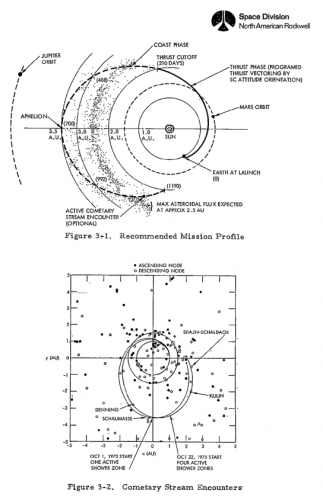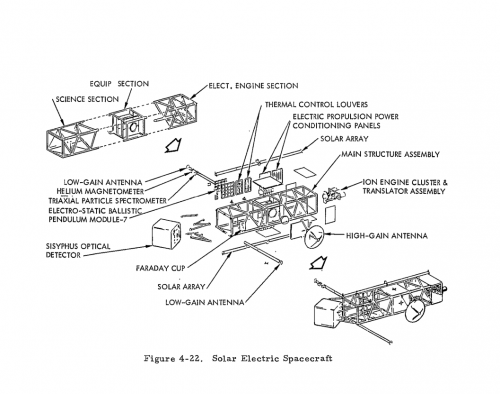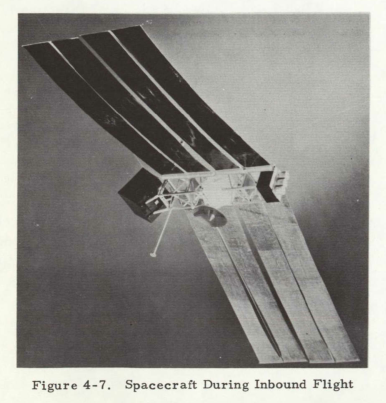- Joined
- 16 December 2010
- Messages
- 2,832
- Reaction score
- 2,064
A design by North American/Rockwell for the same contract as the TRW 'Solar Electric Multi Mission Spacecraft'. Unlike that vehicle, which was intended for use for a variety of missions, this spacecraft was optimised for untargeted asteroid belt exploration, though with it's particle and fields dominated instrument fit out, it could also have been used for 'out of ecliptic' missions.
Solar electric propulsion asteroid belt mission study. Final Report. Vol. 1, Summary Report
http://ntrs.nasa.gov/archive/nasa/casi.ntrs.nasa.gov/19700014164.pdf
Solar electric propulsion asteroid belt mission study. Final Report. Vol. 2, Technical Report
http://ntrs.nasa.gov/archive/nasa/casi.ntrs.nasa.gov/19700014165.pdf
Solar electric propulsion asteroid belt mission study. Final Report. Vol. 3, Program Development Plan
http://ntrs.nasa.gov/archive/nasa/casi.ntrs.nasa.gov/19700014166.pdf
Solar electric propulsion asteroid belt mission study. Final Report. Vol. 1, Summary Report
http://ntrs.nasa.gov/archive/nasa/casi.ntrs.nasa.gov/19700014164.pdf
Solar electric propulsion asteroid belt mission study. Final Report. Vol. 2, Technical Report
http://ntrs.nasa.gov/archive/nasa/casi.ntrs.nasa.gov/19700014165.pdf
Solar electric propulsion asteroid belt mission study. Final Report. Vol. 3, Program Development Plan
http://ntrs.nasa.gov/archive/nasa/casi.ntrs.nasa.gov/19700014166.pdf



